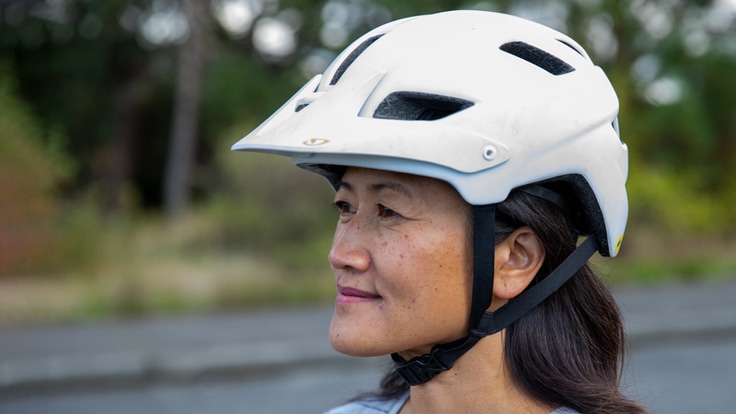If you're reading an article on how to choose a bike helmet, chances are you don't need convincing about wearing one for noggin protection. Helmets simply make sense whenever you ride and some places have laws requiring them. All helmets in the U.S. must meet the same standard for impact protection, but when you're shopping there are a few additional things you might want to consider.
Here are the key factors when you choose a bike helmet:
Above all, make sure you get a helmet that fits properly: A poor fit can compromise protection (and the will to wear your helmet), so get the right size and adjust it properly.
Look for a bike helmet that matches your style of riding: Helmet categories simplify the selection process by steering you toward options more suited to your needs (but a road helmet can be worn on a dirt trail and a mountain bike helmet can still be worn on the road). Bike helmets fall within three basic types:
- Recreational bike helmets are an economical choice and will provide basic impact protection for casual riding.
- Road bike helmets are designed to be lightweight, well ventilated and aerodynamic.
- Mountain bike helmets are well ventilated, and most styles offer extended rear head coverage because a mountain biker is more likely to fall backward than a road rider.
Consider what specialized features you may want: Are new protection technologies and advanced designs (lighter, cooler and more aerodynamic) important to you? Do you need special features like built-in mounts for a light or an action camera? Keep in mind that these will all increase the price of the helmet.
Bike Helmet Fit and Comfort
When choosing a bike helmet, good fit is vital because an ill-fitting lid can actually compromise effectiveness in a crash. And you'll be wearing it for every mile of every ride, so you want it to fit comfortably.
To find the right size bike helmet, start by measuring your head circumference because helmet sizing is based on that.
To find your head circumference, wrap a flexible tape measure around the largest portion of your head—about one inch above your eyebrows. Or, wrap a string around your head, then measure the length of string with a yardstick.
Bike helmet sizing parameters:
- Extra small: below 20" (51cm)
- Small: 20"-21.75" (51cm-55cm)
- Medium: 21.75"-23.25" (55cm-59cm)
- Large: 23.25"-24.75" (59cm-63cm)
- Extra large: above 24.75" (63cm)
- One size fits all: has a highly adjustable fit system
How to Adjust a Bike Helmet
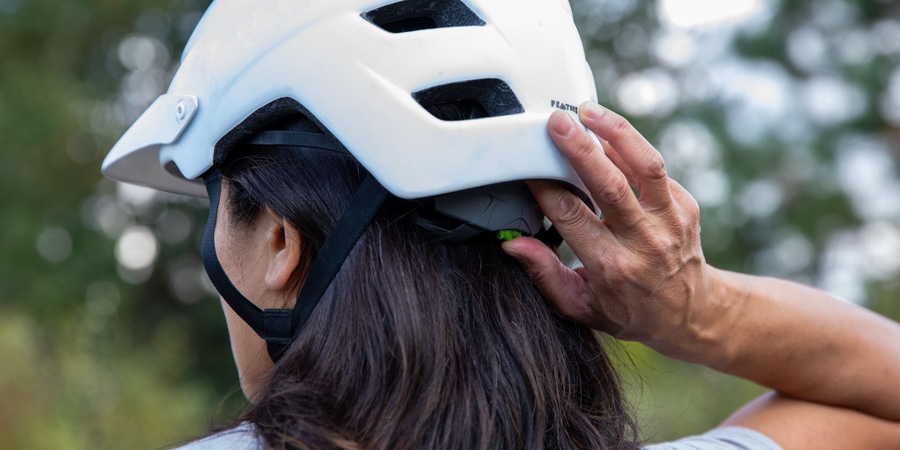
First, adjust the tightness. Many helmets have an adjustment wheel that you can open fully to put the helmet on your head and then twist until you get a snug fit. (Fit systems vary, though—you can still find helmets that adjust fit snugness using interchangeable interior foam pads.)
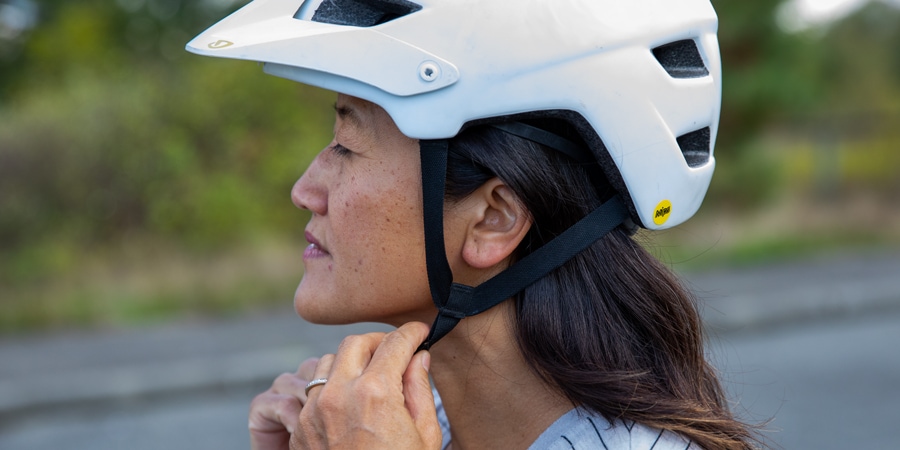
Next, buckle and tighten the chin strap. The straps should form a V as they rest under each ear. (If they don't form a comfortable V, adjust the buckle under each ear until they do.)
Finally, with the chin strap buckled, open your mouth wide. The helmet should press against the top of your head as you do so. If not, tighten the strap a little and repeat. (Just don't overtighten the strap until it's uncomfortable.)
Additional Bike Helmet Fit Tips
Brand sizing varies: The sample sizing numbers above differ slightly among helmet brands, so always double-check head circumference on the size you're considering. Also, similar to shoes, brands use proprietary shapes for helmet molds, so it's a good idea to try helmets on at a store to see if one brand fits your head shape particularly well.
If you're between sizes, go with the smaller size. Other options are to look at other helmet models or wear a cycling cap or beanie to improve the fit of the larger helmet. Some adults with smaller heads can wear a kids' size comfortably.
A good-fitting helmet should be snug but not annoyingly tight. It should sit level on your head (not tilted back) with the front edge one inch or less above your eyebrows so that your forehead is protected. Push the helmet from side to side and back to front. If it shifts noticeably (one inch or more), you need to adjust the fit.
Choices in Helmet Protection
A helmet's primary mission is to guard against head injuries from the impact force of falling off a bike, and established tests all measure a helmet's effectiveness at doing exactly that.
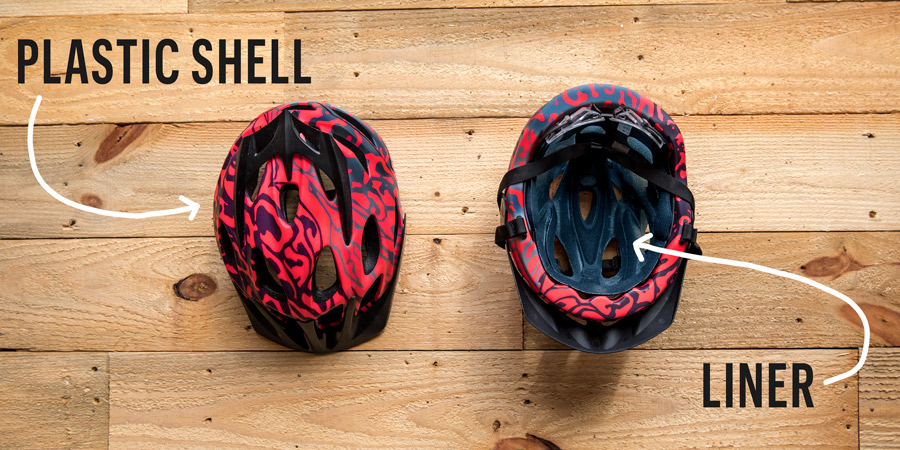
The protective part of a helmet consists of an outer shell and inner liner that are integrated together:
- A helmet's plastic shell provides some puncture resistance and allows the helmet to slide on impact (to protect your head and neck).
- A helmet's liner is made of expanded polystyrene foam (essentially high-grade styrofoam); it protects your head by slowing it down and by dissipating impact forces.
We now know that rotational forces can also cause brain injury, even if damage is less obvious. As a result, helmet makers have developed a broad array of technologies—all branded with different terms—to minimize rotational forces during a crash. If you're a frequent bike rider, or simply want greater peace of mind, you may decide that the additional cost of the following specialized technologies may be worth considering:
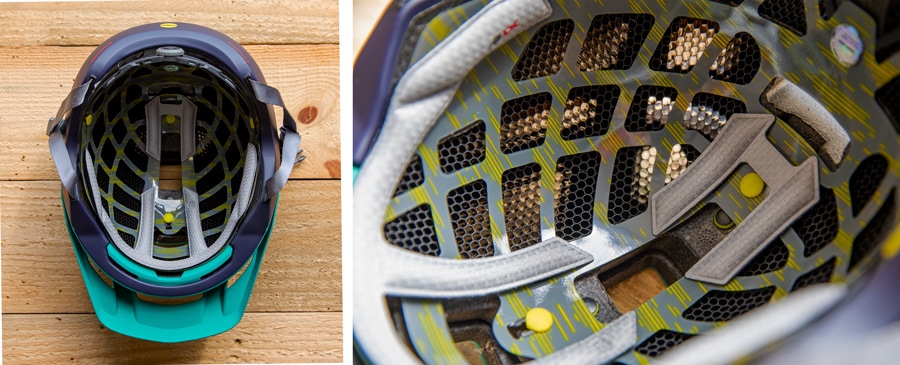
Mips: Multi-directional Impact Protection System (Mips) technology, found on helmets from a number of brands, features a low-friction layer that redirects rotational effects by allowing the impact-absorbing foam liner to rotate slightly during an impact.
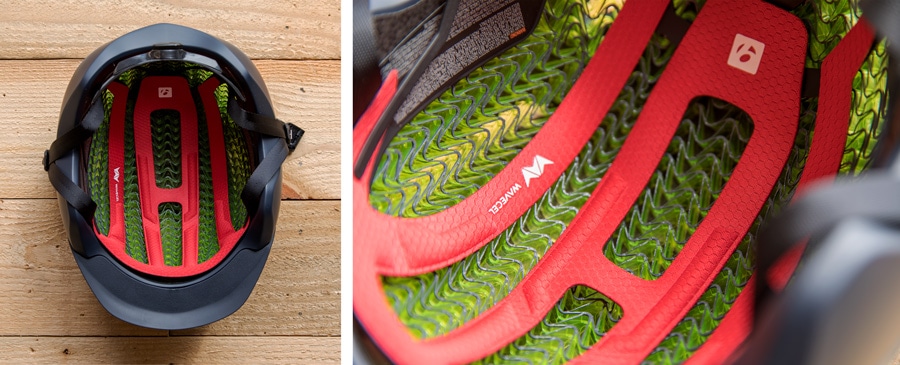
WaveCel: Found on some Bontrager helmets, this technology features a honeycombed liner material that is engineered to create a sophisticated "crumple zone" that absorbs both primary impact forces and rotational energy from an impact.
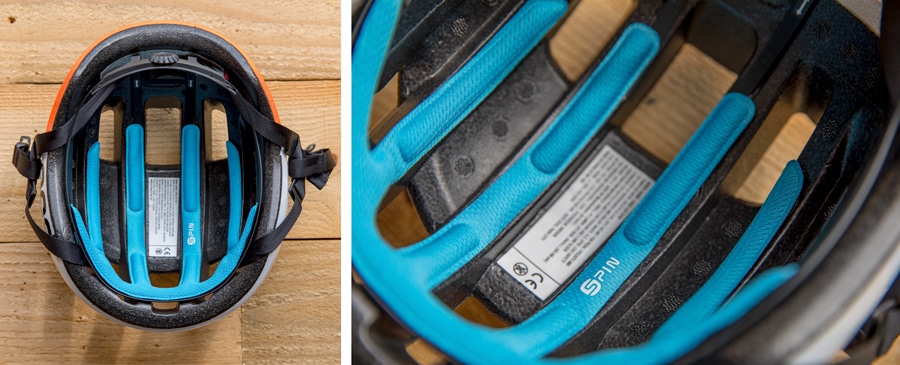
SPIN: Found on POC helmets, SPIN (Shearing Pads Inside) technology features silicone-injected pads in a structure that moves inside the shell to redirect rotational forces during an impact.
Choices in Bike Helmet Features
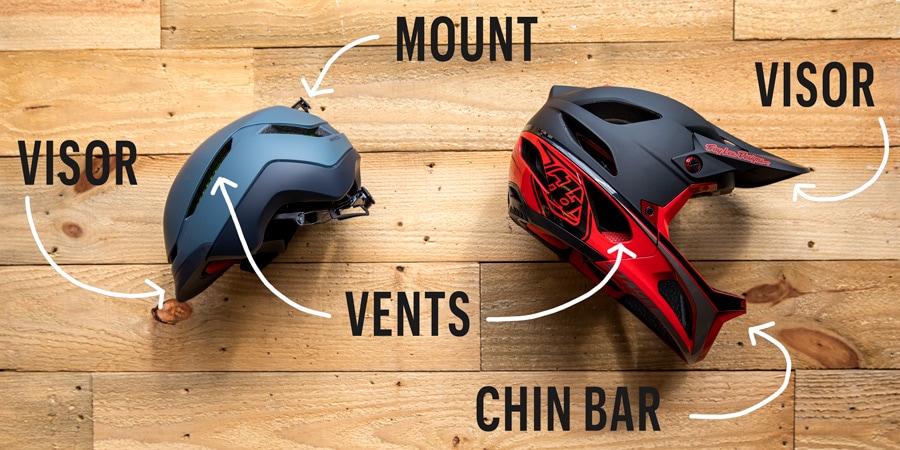
Ventilation: Helmet vents enhance wind flow over your head, keeping you cooler and more comfortable as you ride. The more vents you have, the lighter the helmet, too.
Visor: Many riders like having a sun-shielding visor—they're common on mountain bike helmets.
Full face protection: Some mountain bike helmets have a wraparound chin bar to provide face protection for downhill mountain biking or racing.
Mount compatibility: Some helmets are designed to let you snap in a mount that holds an action camera or a light (sold separately).
Bike Helmet Care
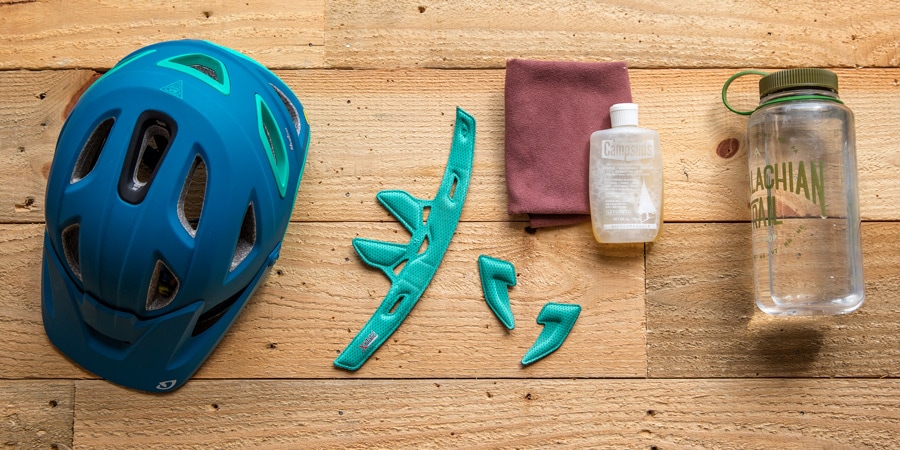
- Avoid using chemical solvents to clean a helmet. Manufacturers recommend only the use of a soft cloth or sponge, plus mild soap and water. Removable pads may be washed.
- Do not store a helmet in an attic, garage, car trunk or other area where heat can accumulate. Excessive heat may cause bubbles to form on helmet parts. Do not wear a heat-damaged helmet.
- Avoid loaning your helmet to others. You want to know exactly what kind of use your helmet has experienced during its lifespan.
When to Replace a Helmet
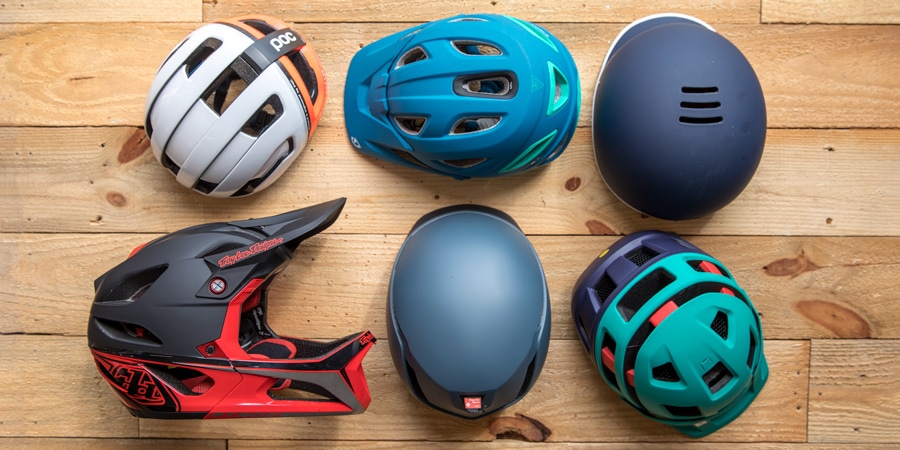
Bike helmets are designed to absorb a single impact, so always assume that a helmet involved in any type of accident is damaged. Even if it looks OK, get a new one.
And, even if you've been crash-free (awesome!), you should still replace any helmet after five years. Pollution, UV light and weathering may weaken key components over time.
